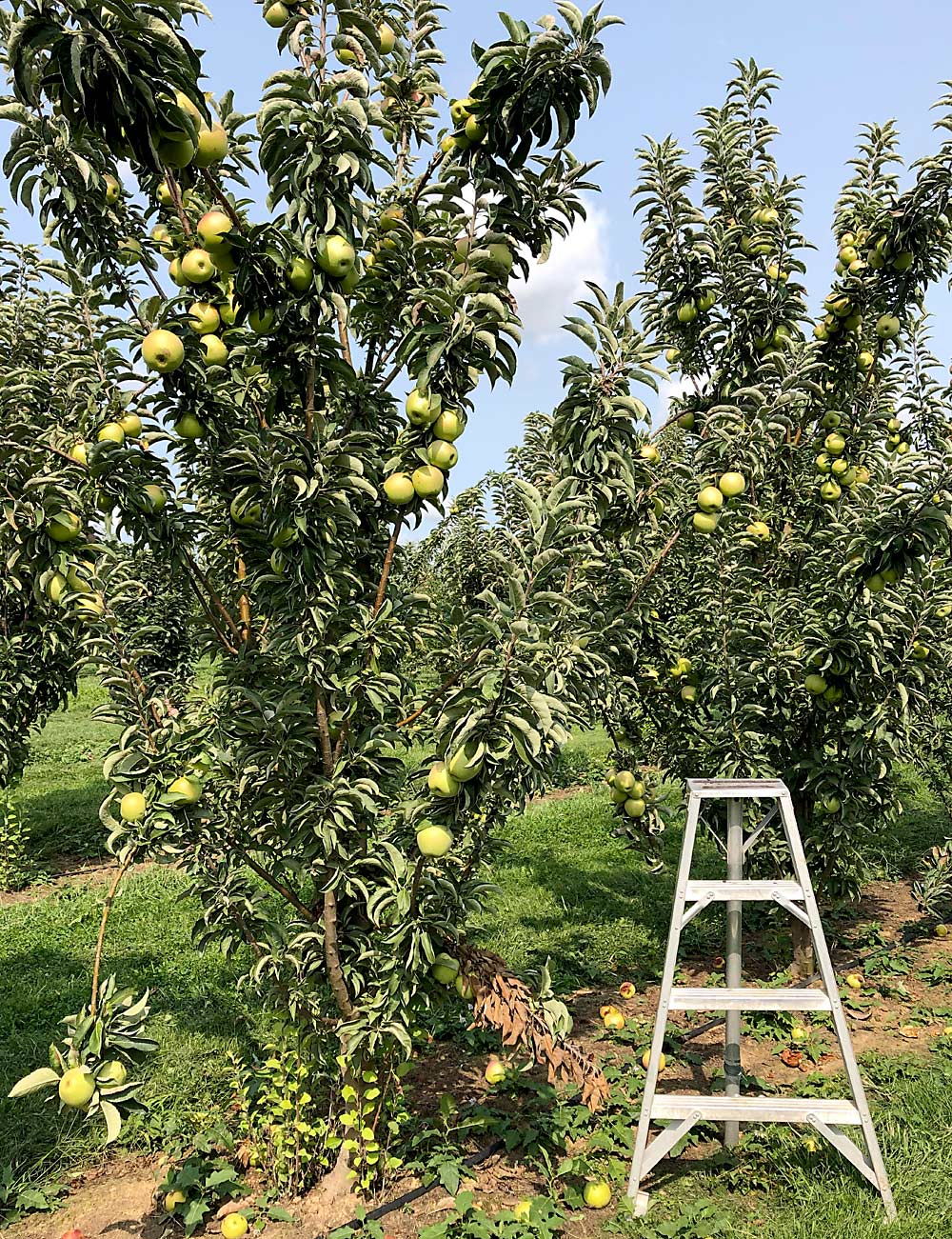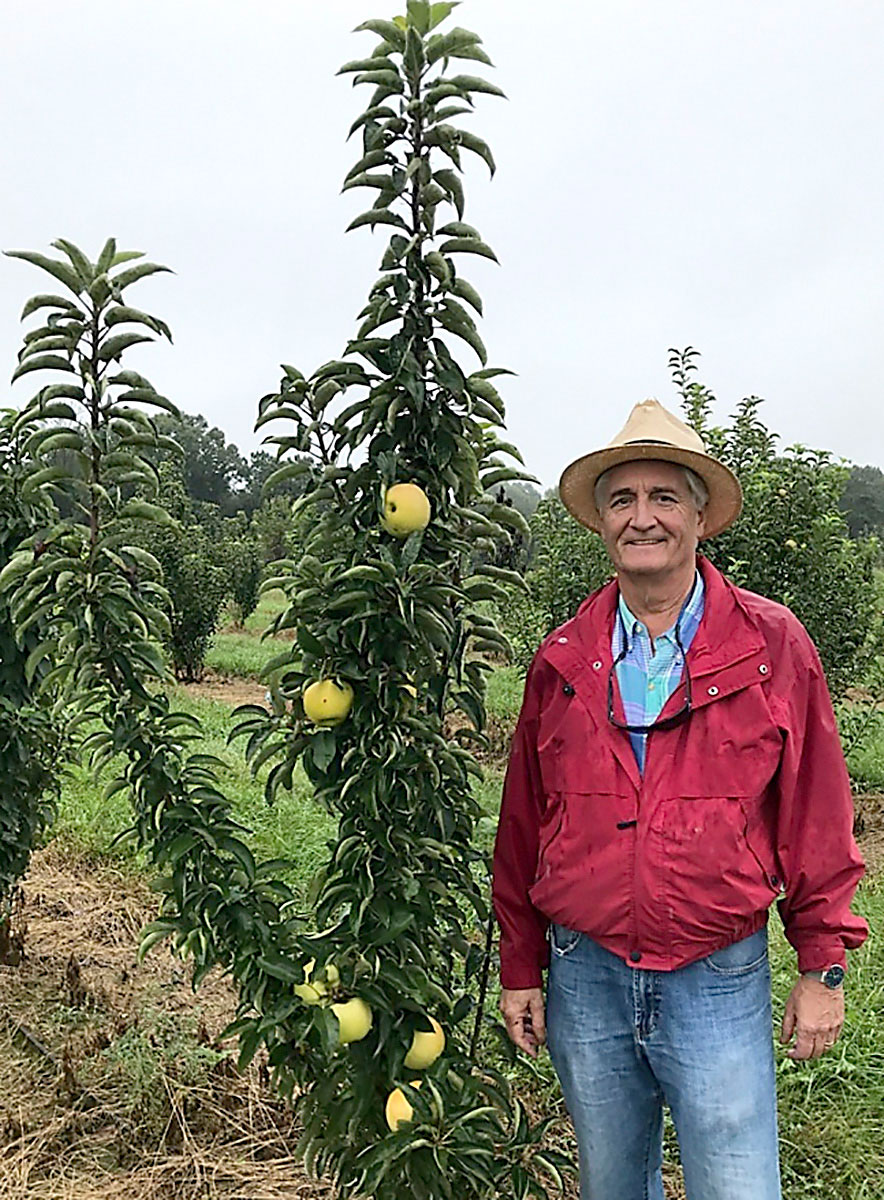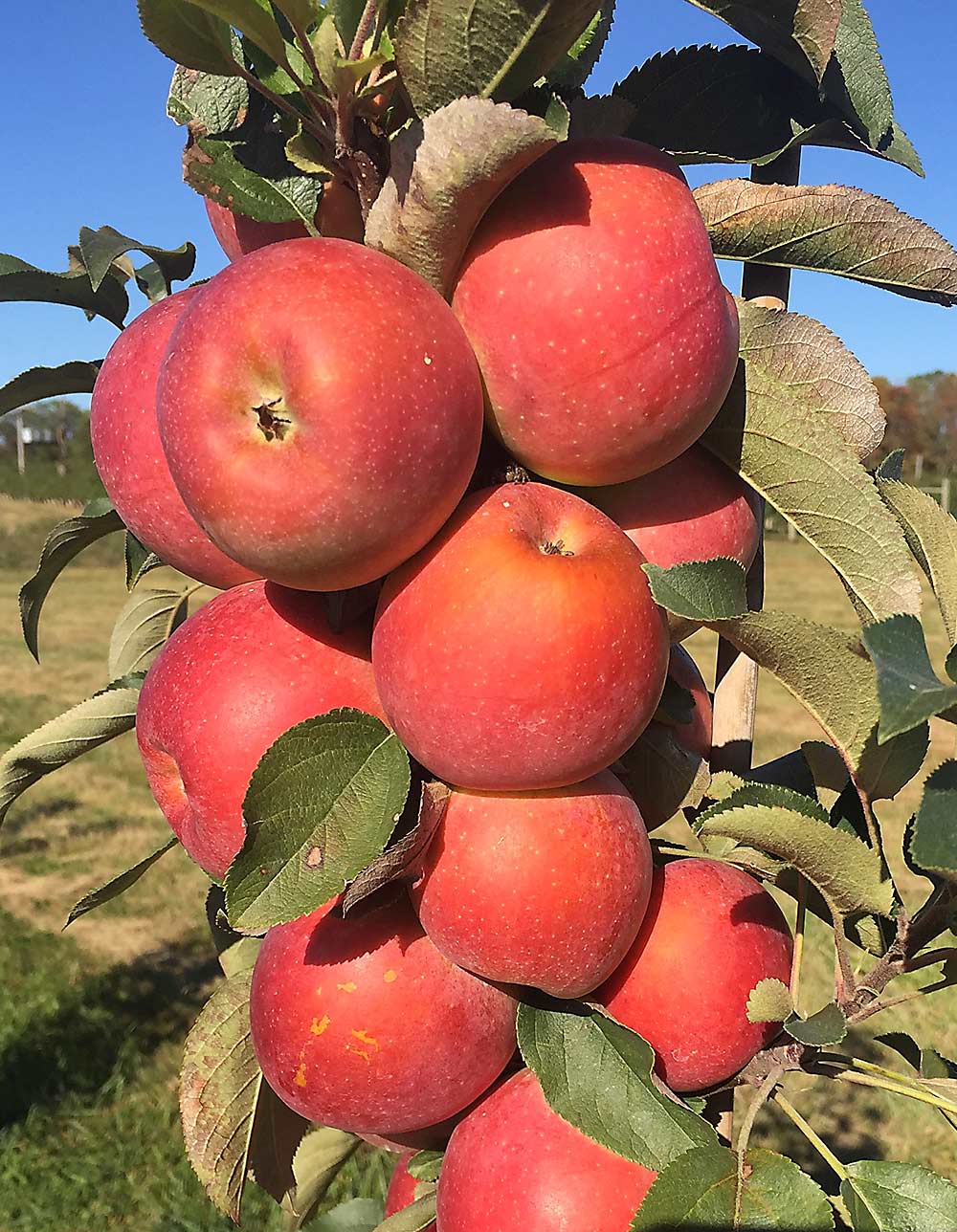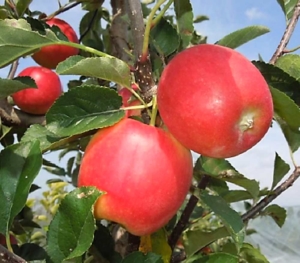
In the Southeastern U.S., it’s just too hot for Honeycrisp. That’s a problem when you consider how the cultivar’s crispness has become the backbone of the apple breeding programs in North America, all of which currently sit at northern latitudes.
“Our warm nights make it tough. We were testing stuff from the north, and it is green one day and on the ground the next,” said Chris Walsh, a professor emeritus of horticulture at the University of Maryland.
Seeing that problem, he and his colleagues, Julia Harshman and Kathy Hunt, quietly launched a low-budget cross-breeding effort some 30 years ago to find new selections that could replace Red and Golden Delicious in the region.
This year, the university patented two varieties from that effort — one red, another yellow — that show good fire blight tolerance and have a compact, upright habit that should require less labor for pruning and training, a plus for the region’s direct-market growers. And the cultivars, named MD-TAP1 and MD-TAP2, handle the heat well. (TAP is short for Tree Architecture Program.)

“I started off thinking that I was breeding for the Southeast, but it turns out I was breeding for climate change,” Walsh said. “The dream was looking at fire blight tolerance and labor savings; now it’s a whole different ball game.”
He based the program on Gala, because it grew well in the region, produces less ethylene and ripens more slowly, but he also wanted to find something with stronger fire blight resistance for the hail-prone region. The first cross, Gala by McIntosh Wijcik, produced a selection with Gala-like quality and a compact, upright habit. Walsh calls it Compact GalaMac, and used it as the parent for his next generation.
The university previously released its first variety, named Antietam Blush, in 2017, which crossed the compact parent with Cripps Pink. For the new releases, MD-TAP1 takes its fruit characteristics from its GoldRush parent, while MD-TAP2 has a Fuji parent.
While he’s no geneticist, Walsh suspects the new cultivars’ heat tolerance stems from their Golden Delicious heritage, by way of Gala and GoldRush.
Similarly, the Hot Climate Programme, a breeding and cultivar evaluation effort started in 2002 by a partnership between New Zealand Plant and Food Research breeders and the Catalonian apple industry association Fruit Futur, tapped into a gene pool with strong Gala lineage. The program’s first commercial release, HOT84A1, which debuted earlier this year under the brand name Tutti, is a Scilate (Envy) and Scired cross.
“With the world’s climate changing, it’s vital innovative new varieties are developed to withstand high temperatures and enable growers across all major continents to adapt and have sustainable businesses,” Morgan Rogers, general manager of VentureFruit, the variety management arm of T&G Global, the company commercializing the variety, said in a statement.

In the Catalonia region of Spain, where Tutti and the program’s other promising selections have been trialed, growers contend with hot days and warm nights, similar to the Southeastern U.S. and South Africa.
One South African grower already called Walsh to ask questions about his new cultivars, he said.
But there’s still a lot more to learn about Maryland’s new apples once Walsh can get them into growers’ hands and commercial management techniques are employed. He has run the breeding effort “on a shoestring” so far and eagerly awaits production trials.
Walsh is now working with a nursery to grow trees for local on-farm trials, as well as one at Michigan State University. Texas A&M University horticulture professor Amit Dhingra also expressed interest in trialing them.
“The idea was to develop compact plants that have good disease resistance as well as fruit quality,” Dhingra said. “Having such a cultivar would provide an alternative to using rootstocks and reduce the cost of orchard establishment.”
The idea of reducing the establishment cost and pruning labor is appealing, said Ben Butler, farm manager at Butler’s Orchard in Germantown, Maryland, a large U-pick farm with a season that stretches from strawberries to Christmas trees.
“We’re all pick-your-own, so our model is not about bushels per acre as much as a pedestrian system and a nice fall photo op for your family,” Butler said. While the farm does have some high-density plantings, “freestanding is more our style.”
The new cultivars’ harvest timing should work well for growers like the Butlers, Walsh said, by landing in the gap left by Red Delicious in late September, when fall weather and pumpkin patches beckon customers, but before Fujis come in.
Butler also likes the idea of cultivars bred specifically for the region’s climate, though he couldn’t offer much more feedback on the fruit because he hasn’t yet been able to get budwood. But generally, he thinks Walsh, his horticulture professor back in the day, is on the right track with the traits the region needs. Now they just need to try to grow them.
“It’s a long game,” Butler said.
—by Kate Prengaman







Leave A Comment